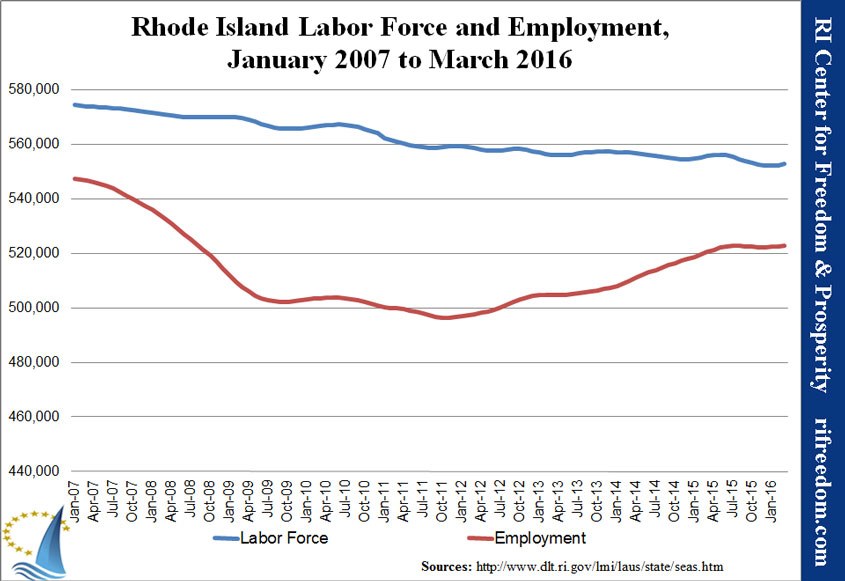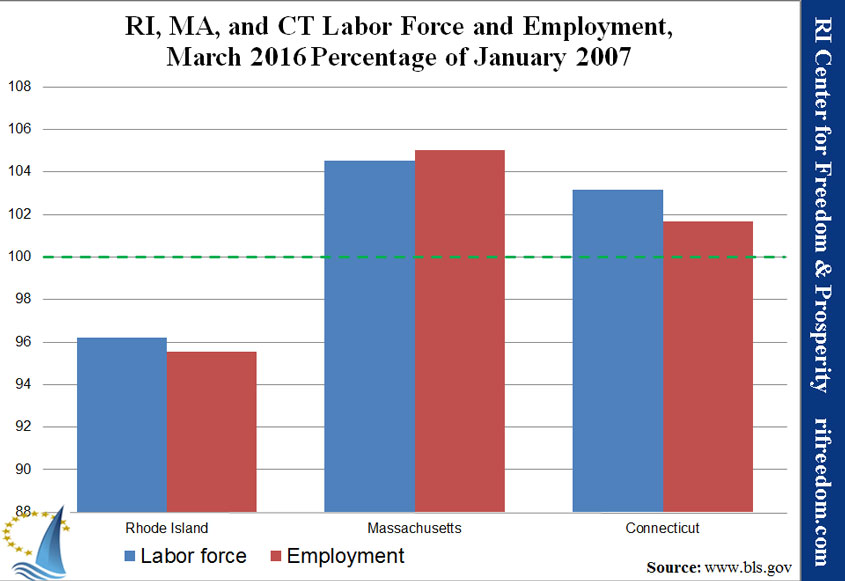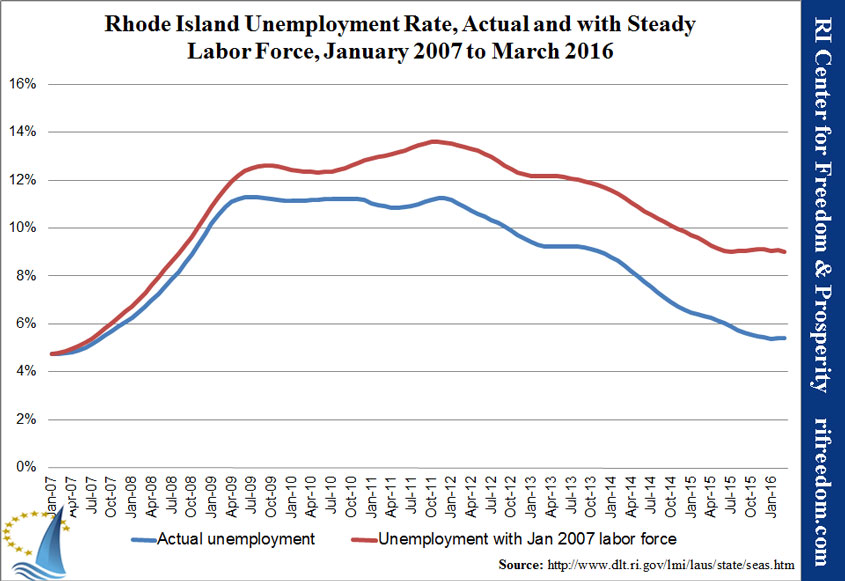Rhode Island Employment Snapshot, March 2016: Up but Losing Ground
[Click here for the printable one-page PDF of this post.]
Although Rhode Island’s unemployment rate held at 5.4% in March, the good news from the federal Bureau of Labor Statistics (BLS) is that the two components of the rate were both in positive territory: Labor force was up 683, and employment was up 561.
Be that as it may, the first monthly chart shows that these relatively small increases weren’t enough to change the ongoing story of stagnant employment growth and declining numbers of Rhode Islanders looking for work. Despite the slight bend upward, the blue labor force line remains as low as it was in late 2002, and employment remains well below its pre-recession level.
Those two negative considerations show their effects in the second chart. Rhode Island is still the New England state farthest from regaining all of its employment and the only Southern New England state below its January 2007 level. After nearly a decade, in other words, Rhode Island still has not caught up.
If that harsh reality seems not to coincide with some of the reporting about employment trends and the unemployment rate, specifically, the third chart gives some perspective. The blue line, which shows the trend for the official unemployment rate, gives the impression that Rhode Island’s employment condition has only paused in its gradual return to a healthy low unemployment rate. However, the red line shows what the trend would have been if Rhode Islanders had not been dropping out of the labor force (i.e., stopped looking for work). In that case, unemployment remains stuck at 9.0%, having completely ceased improvement for nearly a year.
To better reflect Rhode Island’s employment situation, as experienced by Rhode Islanders, going forward, these monthly reports will shift focus to emphasize the RI Center for Freedom & Prosperity’s new Jobs Opportunity Index (JOI), which will take multiple additional factors into account, such as welfare participation and wealth.



